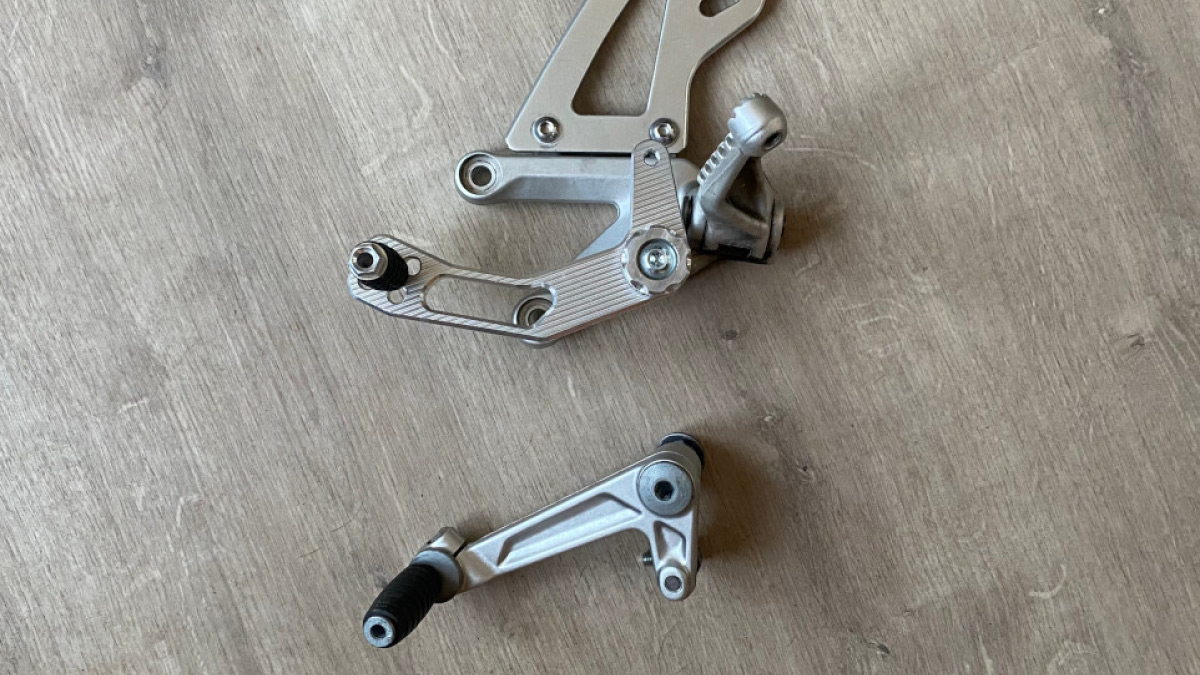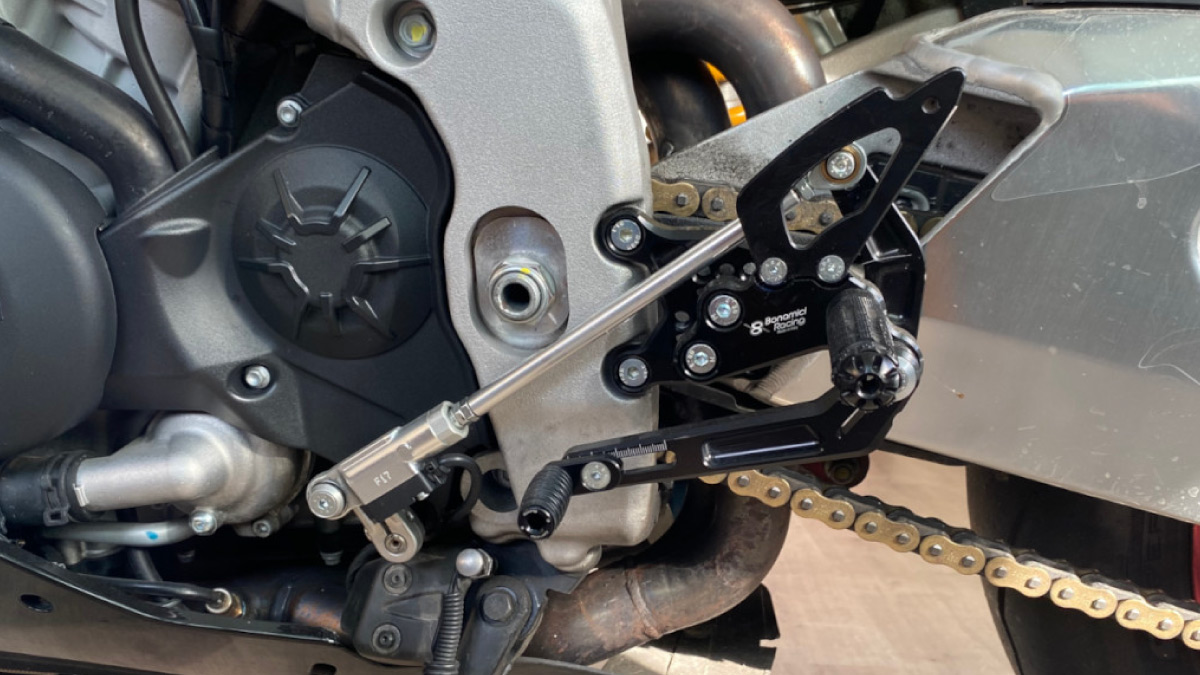THRYLLZ
Thrills we thrive on
Thrills we thrive on
Smooth gear changing is perhaps one of the more difficult aspects of motorcycling. It sounds so simple. And actually, it is. But still, it remains a strange thing. In addition to the technique, there are also two ways of changing gears: GP shift vs Road shift. Which is better?
Is there a “better” option between these two? Or is it mainly a matter of personal preference? And why would you choose GP shift, also known as reverse shifting? We will tell you more about it.
Contents:
If you are not yet familiar with this, let us first explain the difference between the two. “Road shift” is the normal gear pattern found on road motorcycles. To put the motorcycle in first gear, move the gear lever down once. For all other gears, move the lever up.
GP shift is also known as “reverse shifting” or “race shift”. This is because you reverse the shift pattern. On a motorcycle with reverse shifting, you move the gear lever up once to put the motorcycle in first gear. To then shift up, you move the lever down.
The difference is therefore in the direction in which you shift. Reverse shifting has no effect on a blipper or quickshifter. These are usually mounted in the rod of your gearshift set, but your quickshifter or blipper has little to do with your gearshift pattern. In some cases, you do have to ‘learn’ the blipper which way the bike shifts.
Do you want to reverse your gear shift? It depends on your motorcycle how easy it is to convert your gear shift pattern. Or rather, it actually often depends on your rear set. On some motorcycles with a specific, original brake and gear shift set, it is very easy. On others, it is impossible. In that case, you often have to purchase a separate part (your gear lever) to convert it.
It has to do with where the rod (which often incorporates the quickshifter) is attached. And how it is attached in terms of “pull and push” movement.
On our Suzuki GSX-R 750 with a PP Tuning brake/gear shift set, it was extremely simple. By turning the shifter joint 180 degrees, you could change the shift pattern from standard or normal shifting (Road shift pattern) to reverse shifting (GP shift pattern). A piece of cake, in other words.

When we then wanted to switch the gear pattern on our Aprilia RSV4 to GP shift, we suddenly couldn’t. Even though the RSV4 is a thoroughbred race bike, we first needed a different shift lever to switch it.
We were very surprised that a racing brand like Aprilia does not take this into account in its standard set-up. On the other hand, it does create fantastic additional sales of technical accessories. Something to do with smart marketing…
Do you want to reverse shift on your motorbike? A little online research will often quickly tell you whether it’s a simple job or not. Otherwise, ask your local motorcycle shop. They’ll see it straight away.
Now we hear you asking, ‘Why would you want to shift in reverse?!’ Reverse shifting is widely used in racing, which is why it is also called “race shift” or “GP shift” (from MotoGP, among others). Reverse shifting mainly reduces risk and makes it easier to shift up while still leaning into the turn.
All right, let me explain. Imagine you are riding your motorbike on a racetrack. You are riding and leaning the bike at a greater angle than you would on the road (street racers aside). You then accelerate out of the turn, with the bike still leaning at a greater angle than you would on the road.
If you then have to hook your foot under the gear lever and push it up to change gear, you can get stuck. Your foot will touch the tarmac. It also simply takes more effort than a quick tap downwards.
It is also easier when leaning into a long right-hand bend. You don’t have to wedge your left foot under the gear lever, which requires a change in position. So why is it more efficient?
If this is a long turn where you want to short shift to get more drive out of the turn (i.e. you shift earlier than you normally would), you only need to give a small tap downwards while pushing the motorbike slightly upright.
So are you going to be riding on track? Then reverse shifting is recommended. Are you already doing track days and are you wondering if it really makes that much difference? Our answer to that question is yes. We personally think it makes a significant difference. You shift faster with less effort. A win is a win, ladies and gentlemen.
If reverse shifting is so ideal, why would you choose to stick with the normal shifting pattern? Actually, the answer is quite simple: if you don’t have a problem with normal shifting.
To explain further, on many motorcycles, the normal gear pattern is a pleasant way to shift gears. It will also be difficult to change the gear pattern of your chopper. In practice, reverse shifting is only often seen on sport bikes and naked bikes.
Do you have no problem with the normal gear pattern? Then there’s no real reason to change it. Ultimately, it comes down to preference. If you don’t know any better, then you’re probably not missing out on anything.
Do you have the luxury of owning several motorcycles that you can take for a ride? And do they all have a normal gear pattern? Then it won’t do you much good to convert one motorcycle to reverse shifting. You’ll only make mistakes more quickly.
Do you feel that you could shift more efficiently? Then you can always try converting to GP shift. Personally, I find it feels much more natural. Please note: do you have the luxury of owning both a street bike and a track bike? And do you want to convert your track bike to GP shift, but leave your street bike on road shift? Keep in mind that it will take some time to get used to the different gear pattern again.

Is there a “better choice” between the two? Ultimately, it comes down to personal preference. We know track day riders who ride very fast and shift normally. And we know road riders who have converted their motorbikes to GP shift, purely because it feels more logical to them.
It’s no surprise that many racers ride with GP shift. It simply takes less effort to shift up. With reverse shifting, shifting down takes a little more effort. At least, in the form of wiggling your foot under the gear lever and moving the lever up. But shifting down happens at a moment when you are braking and therefore already have to make an extra effort. So it’s more efficient.
Do you regularly ride other motorcycles? Or other people’s motorcycles? On the road, (rough guess) 90% of motorcycles have the normal shift pattern. Then it makes little sense to convert your own motorcycle to GP shift, since you always have to shift (hehe, pun intended…) from one shift pattern to another. Unless you really enjoy making things difficult for yourself. Then go ahead, champ.
Do you think, ‘Guys, why are you making such a big deal out of this? Normal shifting doesn’t take that much effort, does it?!’ Then just leave it as it is. You’re absolutely right.
We use cookies to improve your experience on our site. By using our site, you consent to cookies.
Websites store cookies to enhance functionality and personalise your experience. You can manage your preferences, but blocking some cookies may impact site performance and services.
Essential cookies enable basic functions and are necessary for the proper function of the website.